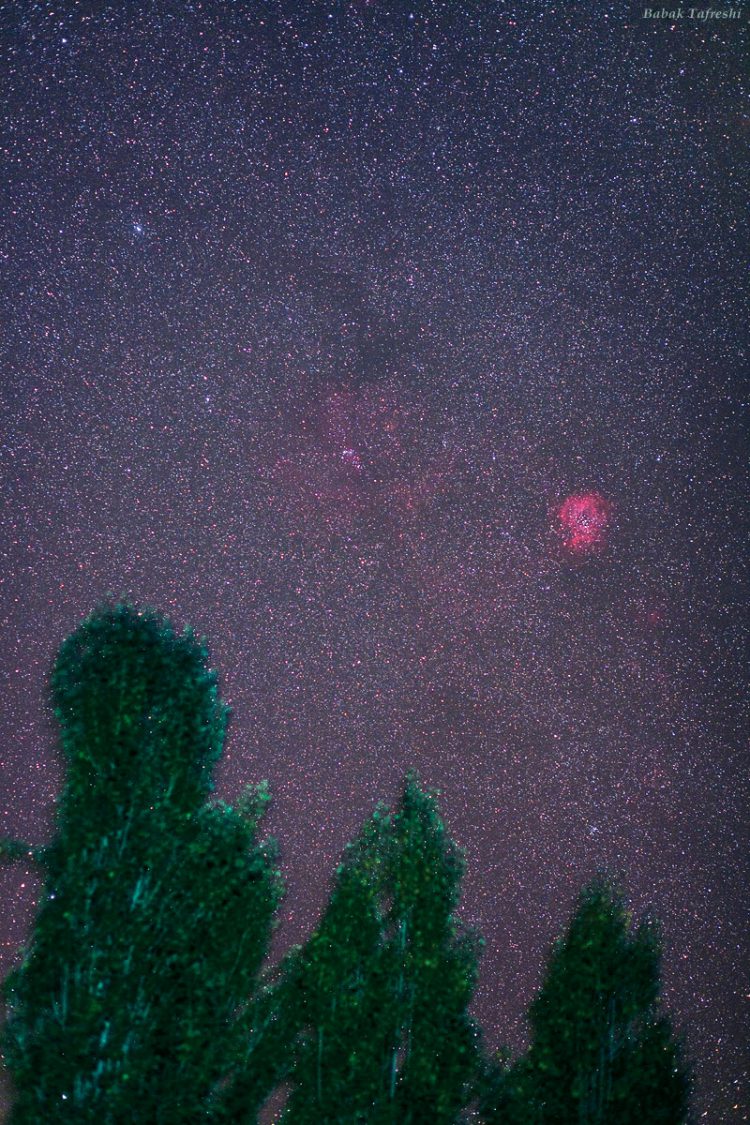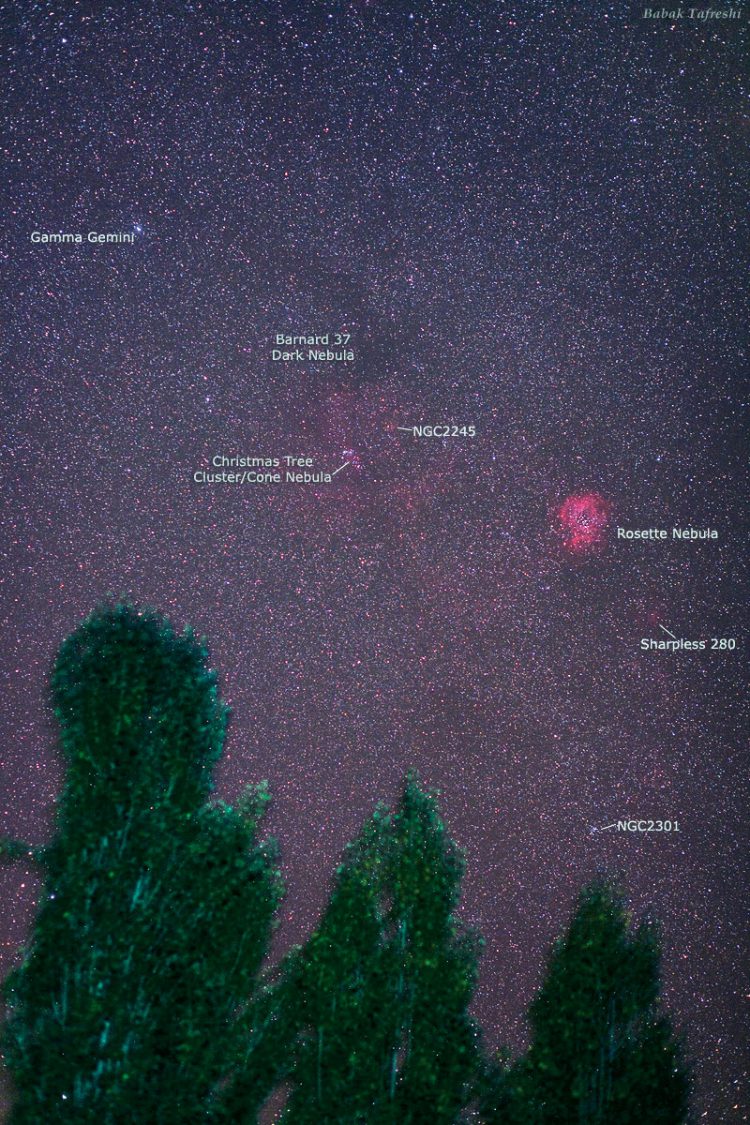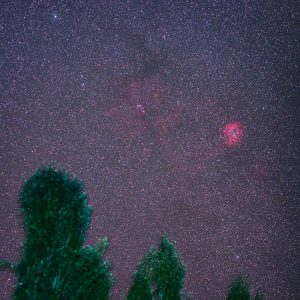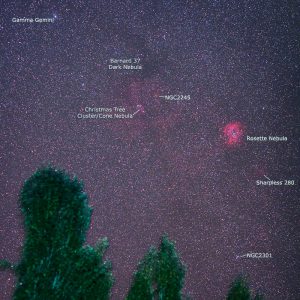The Rose of Night Sky
Description
An emission nebula known as the Rosette in constellation of Monoceros is photographed besides a large dark nebula in the band of the Milky Way. For labels, move the slider on the image. You will notice some other notable deep sky objects in this image. Under dark skies the Rosette nebula is bright enough to be glimpsed even with a good size binocular or a small telescope using a wide-field eyepiece. However we can’t see the color because human eyes are color blind when looking at very faint objects. With apparent diameter of 1.3 degrees the nebula is 2.5 times wider than the Moon disc and this image shows it at less than 2X magnification compared to what human eyes see in the sky (the nebula is not visible to the naked eye). But considering Rosette distance of over 5000 light years in fact it is 50,000 times larger in diameter (65 Light Years) compared to the Pluto’s orbit or 200 billion times wider than the Moon! As noted by the photographer “I’m interested in creating such views for educational purposes as people have mostly seen telescopic images of such objects that do not display where they are located in the sky and how large or how small they are compared to familiar objects like a tree top or the Moon. This is what I call a deep sky landscape astrophoto. This is a single exposure image of Monoceros area with 2 minutes of exposure on a simple tracking mount. The 15-degree long image is made by a modified DSLR camera and an 85mm lens. I made a flash on the foreground trees and I also placed a skyglow (deep sky) filter in front of the lens to keep the background sky dark in order to pop out the red emission nebulae.” © Babak Tafreshi




comments (2)
hi Babak, Congratulation for this amazing pictue
October 19, 2010 at 4:06 amit’s a good idea to compare objects in the sky, that makes them clearer
i tryed to do the same thing with constellations and planets in order to compare brightness and positions but we have the big enemy “light pollution”, anyway the astphotography is the best thing in astronomy
just one question
did you color the nebula or it’s because of the long exposure ?
Thanks Aziza. This is the natural color of the nebula in this not so long exposure. My modified DSLR camera helped too, as its IR-cur filter is removed.
October 19, 2010 at 5:17 pm